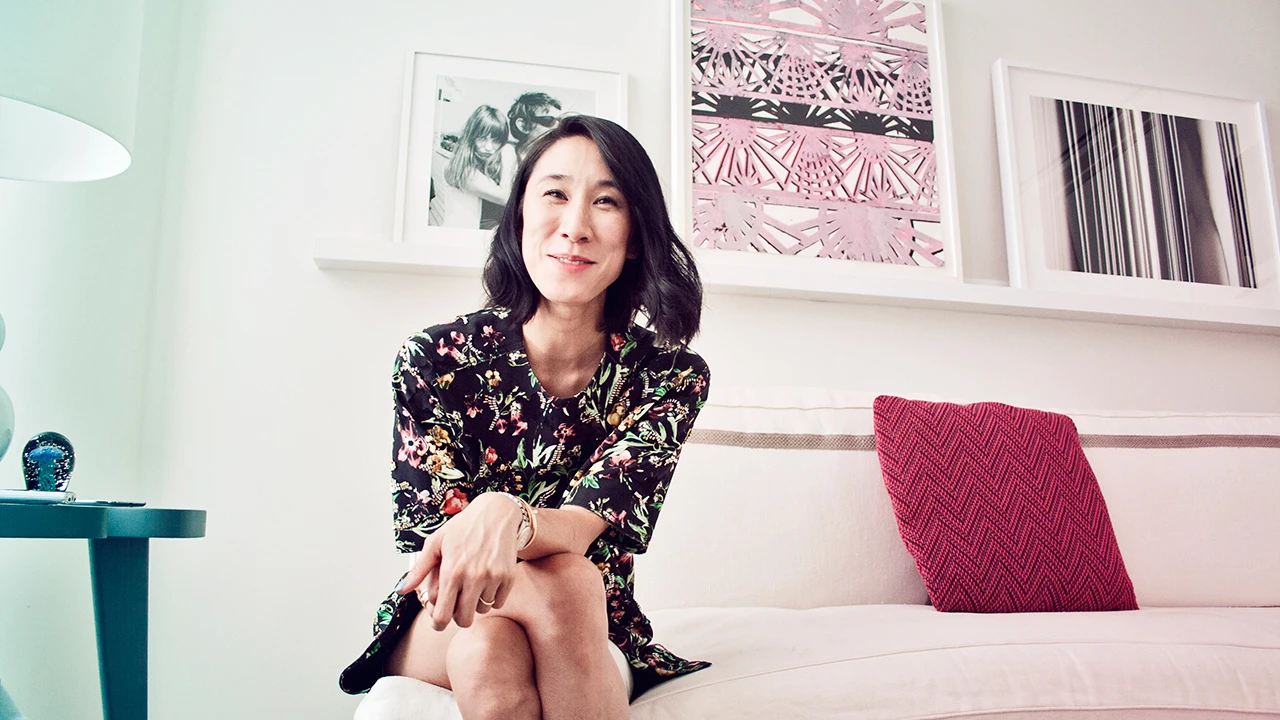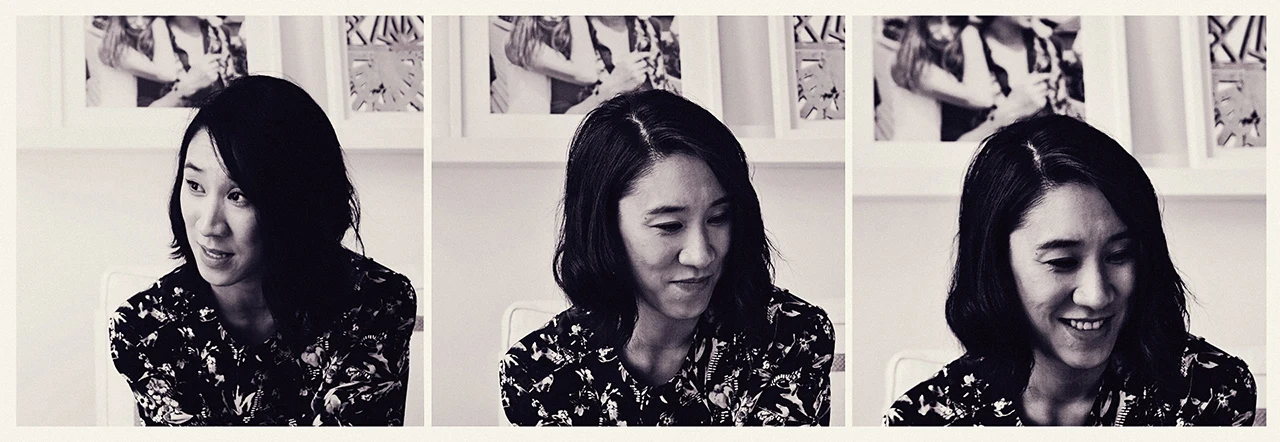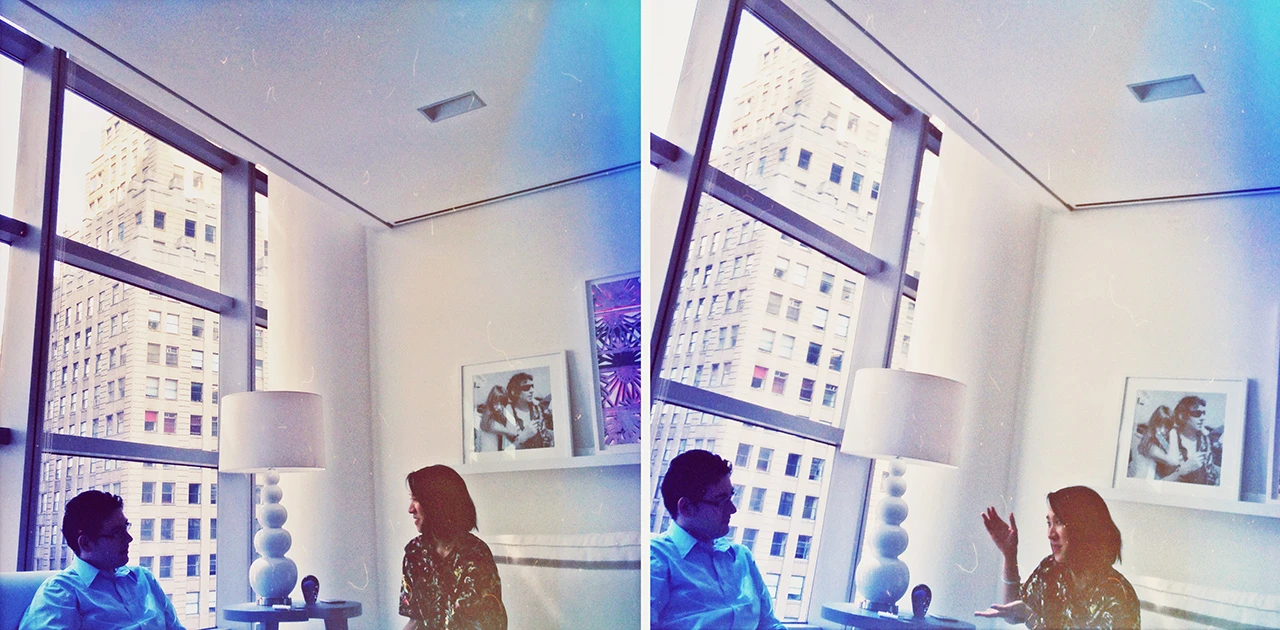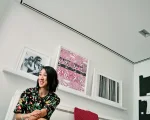“I love Times Square.” Those might not be the words you would expect to hear out of the mouth of a fashion magazine editor, but this kind of statement is typical of Eva Chen, the new editor-in-chief of Lucky magazine. Since her arrival in June, now with two issues under her belt, she has been putting her own stamp on a magazine founded nearly a decade ago. Chen’s office in the Conde Nast building overlooks Times Square, and every day, as she walks to work and sits in her office, she is reminded of her readers.
At 33, Chen is the youngest editor of a major fashion magazine. She is also the first major fashion magazine editor to hail from the ranks of the millennial generation, a cohort with a reputation for inclusiveness, a desire for transparency, and an enthusiasm for technology. These forces guide Chen’s vision for the future of Lucky.

The fashion world and its all-important magazines have traditionally embraced a closed, top-down system, where editors and elites make decisions about what is fashionable, what people should wear, and when they should wear it. As a member of a new generation, which has experienced fashion in the age of blogs, social media, and peer review, Chen feels it’s time to break down fashion’s barriers. “My long-term goal is to rethink the model of a fashion magazine. I think when most people think of a fashion magazine they think of something that’s very austere, removed, and very dictatorial,” she says. “I want to make a fashion magazine that is approachable, that you feel like you can talk to. That serves up every day inspiration, not fashion with a capital ‘F.’”
While this approach has not yet been universally embraced by Chen’s older colleagues, the fact that Chen was one of the first major hires by Vogue editor and fashion gatekeeper Anna Wintour (who also serves as Conde Nast’s artistic director) hints at growing acceptance of the millennial generation’s approach. And indeed, a fresh strategy from someone like Chen may be just what Lucky needs. While circulation has held firm at 1.1 million subscribers since 2010, the magazine’s ad sales have fallen as much as 10% over the last year. While it’s too early to tell if Chen will turn Lucky’s ship around entirely, her arrival has infused the magazine–and buzz about the magazine–with new energy.

Chen is excited by technology–and immersed in it. As a leader, she looks outside of her industry for inspiration. “Something the startup industry celebrates is nimbleness and the ability to change and take risks–I love that,” she says, “You have to be willing to test new things out.”
Chen believes both the fashion and publishing industry have much to learn from the tech industry’s approach to problem-solving (which she describes as constantly challenging the status quo) and the way in which the tech world aggressively recruits talent; since her arrival at Lucky, Chen has been attempting to emulate the tech world’s approach.
Just as an app is constantly being iterated on and exists in different variations simultaneously, Chen has tried to think about her product as existing in three “time zones,” which she describes as, “right now, long lead, and short lead.” From the beginning, when Chen conceives of a story, she thinks about how it will fit in the magazine, how it will be different online, and how it will be featured on social channels, and she works to make sure each “time zone” is considered in an integrated way throughout the editorial and production process. At Lucky, Chen is championing nonconventional, emerging stylists and photographers to work with the magazine–and to spend time with the Lucky team, to provide inspiration and encourage the team to think outside of the box.
She describes with glee the “awesomeness” of seeing Diane von Furstenberg walk down a runway with Sergey Brin, both of them wearing Google Glass. Chen wants to see more moments like that, moments when the fashion industry and the tech and startup worlds collide. “The best brands are always adapting,” she says. “If you look at Apple, Google, Warby Parker, they are all constantly evolving and changing. The way they do things is right. I don’t want this ship to ever feel steady, I always want to be trying new things.”
Perhaps it’s no surprise, then, that Chen is on a mission to use her editorial powers to get the fashion world talking about the tech world. She is constantly on the lookout for opportunities to profile entrepreneurs in her magazine and bring them to the attention of Lucky readers. In the current issue of Lucky, Chen championed a profile of Paperless Post founder Alexa Hirschfeld–and Chen says more startup-centric profiles are in the offing.
Chen’s love affair with fashion magazines goes back to her junior year in college, when she interned at Harper’s Bazaar. Shortly after graduating college, she worked at Lucky and Elle before becoming the beauty director at Teen Vogue. She stayed at Teen Vogue for seven years and worked in several different areas there, including special projects and digital. It was at Teen Vogue that she began developing her social media savvy, leading the magazine deeper into digital territory.

Today, Chen is known as one of the most active and responsive fashion personalities on social media. On Twitter she has upwards of 53,000 followers and on Instagram she has over 73,000. She uses these platforms to broadcast fashion tips, meals, her daily life, and her self-described addiction to shopping. She replies to the scores of people who use social to media to ask her for advice. Chen recalls how, when she was growing up, she never imagined that she might be able to send a note to the editor of a magazine that she admired–and actually get a response. As part of her effort to turn Lucky into a magazine readers feel they “can talk to,” Chen is proudly trying to “set an example by doing that. So if someone tweets me asking whether they should buy Valentino rock stud heels and YSL tribute heels, they are going to get a response from me, in at least 24 hours, if not two hours,” she says.
At Lucky, Chen is also making smaller, practical moves in response to the digital era. While preparing an upcoming issue, Chen and her team had a debate about whether or not to include the locations of stores where items featured in the magazine could be purchased. While it’s fairly traditional for magazines to list the city and state of stores that carry featured merchandise, the Lucky team decided that in the age of the smartphone, when most stores across the country provide some kind of e-commerce (or at least the ability to order by phone), physical locations seemed unnecessary. While this has been true for some time, it took Chen, a digital native, to put in place this kind of small, sensible change.
For all her tech savvy, Chen is adamant that print magazines will not die in her lifetime. “People want to cut things out, and play with them. They want to touch and feel and connect with their fashion. When it comes to fashion, people need that tactile experience.” Chen says. “People really like looking at things. I have every device imaginable, but I still buy books. There’s nothing like cracking open a book.”
[Photos by Joel Arbaje for Fast Company]
Recognize your company's culture of innovation by applying to this year's Best Workplaces for Innovators Awards before the extended deadline, April 12.











